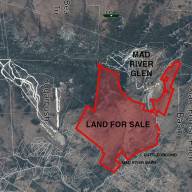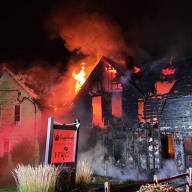By a vote of 415 to 140, Waitsfield voters approved a $15 million bond vote authorizing the town to proceed with plans to create a municipal wastewater system for Waitsfield and Irasville Village areas, or a service area running from the north side of Waitsfield Elementary School to the intersection of Routes 17 and 100.
Ballots for the June 11 vote were sent to all 1,385 of the town’s registered voters. With a turnout of 555 voters that yields a turnout of 40%. For comparison, when the first Harwood Unified Union School District budget was rejected at Town Meeting, voter turnout was 36%. At the second vote in April, turnout was 29%. At the third and final, successful vote in May turnout ranged from 40.4% to 32% across the six towns in the district.
FORCE MAIN
That system will prioritize some 70-plus systems in the service area that are over 30 years old, at risk of flood damage and at risk of contaminating groundwater and nearby water sources if they fail. As currently designed, the system will collect solids from properties in the service area, storing solids in underground, flood re-enforced tanks for collection three or four times a year and processing offsite. Liquids from each property will flow from homes and businesses to a force main running along Route 100 that will transport waste to the Munn field south of town where a tertiary treatment facility will treat up to 89,000 gallons of wastewater per day on site. The treatment system will be a Sequence Batch Reactor (SBR) similar to what has been used at Sugarbush for over two decades.
As proposed, the $15 million project will be funded by $13.3 million in state and federal grants as well as a $1.7 million long-term low-interest loan that will be paid for by users of the system.
70 NEW UNITS
The priority systems will require some 65,000 gallons per day of the capacity at the Munn field and that will leave about 24,000 gallons a day in additional capacity that is enough capacity for about 70 new one- and two-bedroom housing units as well as an 8% to 10% increase in commercial wastewater use in the service area.
Currently the project’s 30% final engineering phase is underway and this phase, like all previous work on the system, has been covered in state grants and forgivable loans. The projected funding stack for the $15 million project includes $3 million in Congressional Discretionary Spending, $6 million from the state’s Village Wastewater APRA/pollution control grant, $3.9 million in a USDA Rural Development grant and a $1.7 million USDA low-interest, long-term loan.
Next steps include continuing the application process for the state and federal funds, now that a successful bond vote has been held, and continuing work on the final engineering report.













